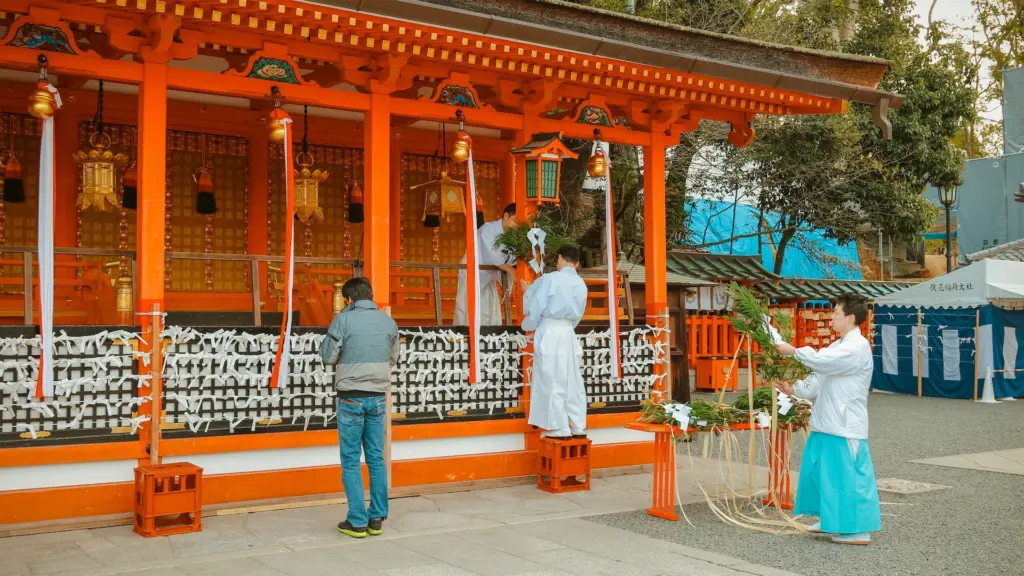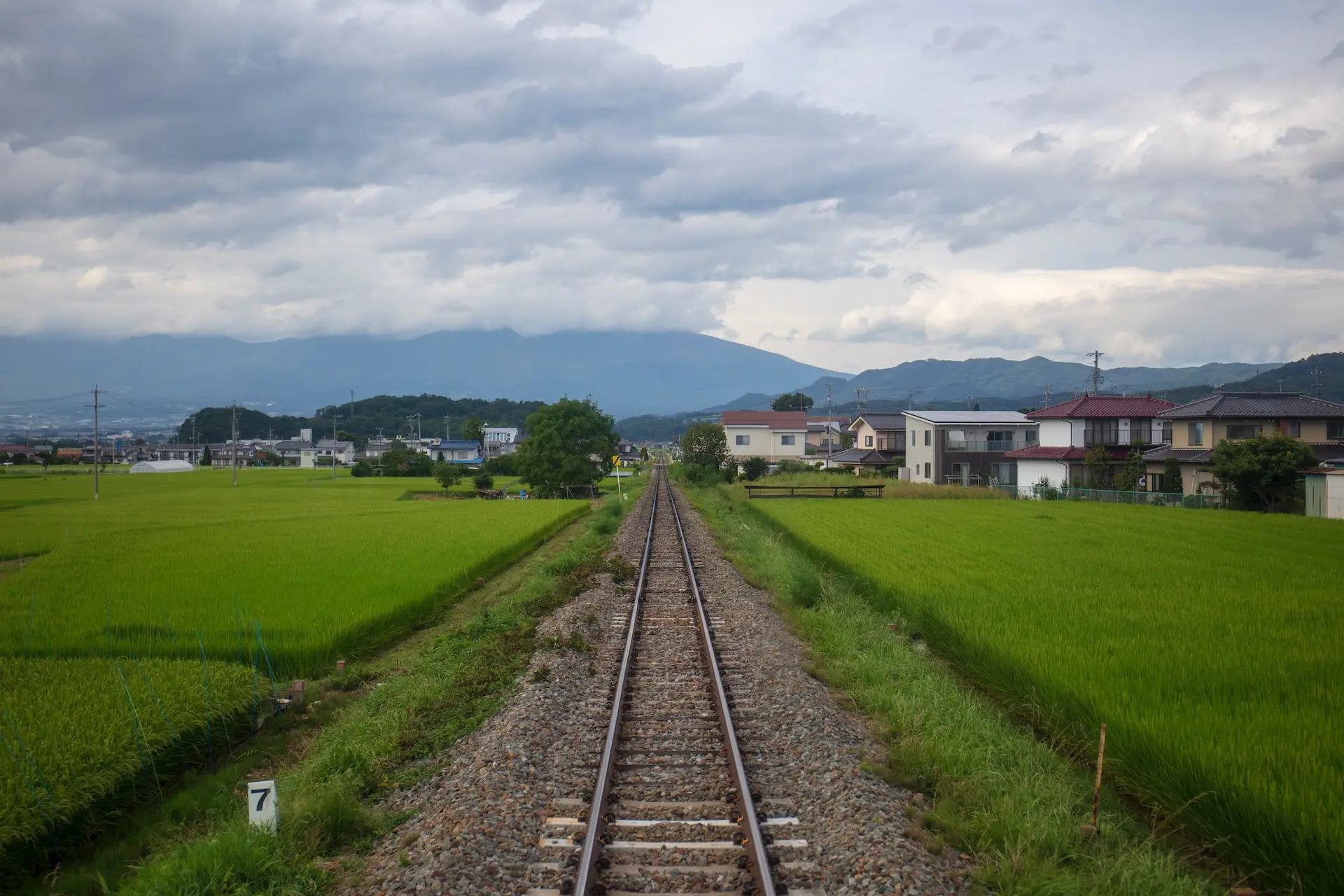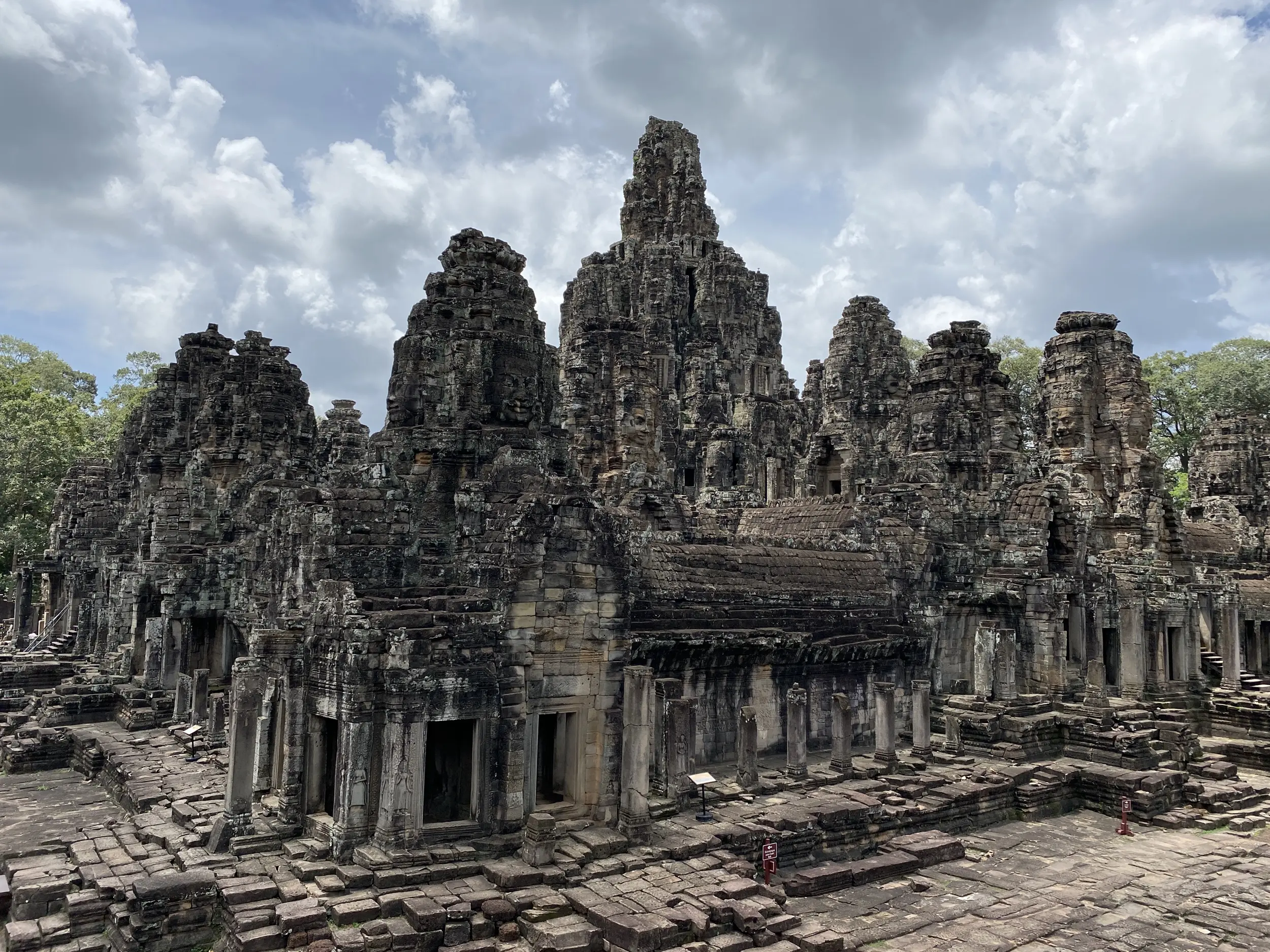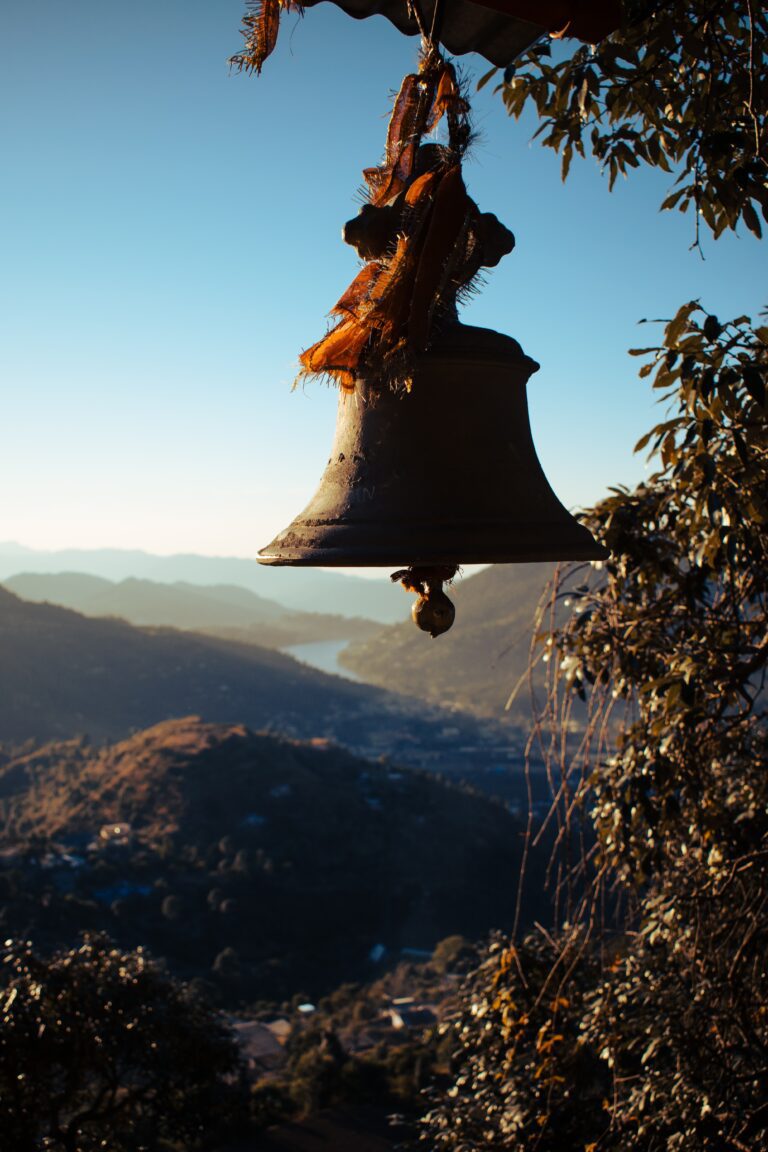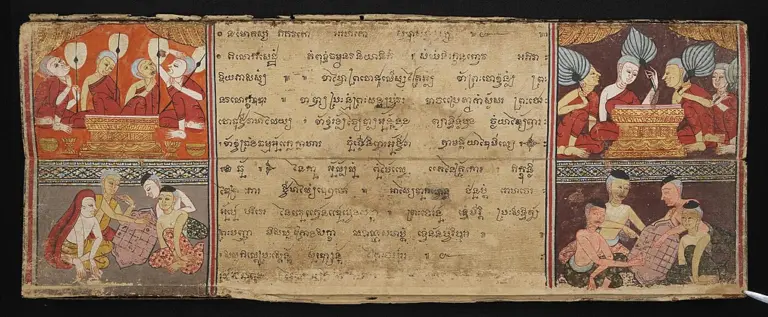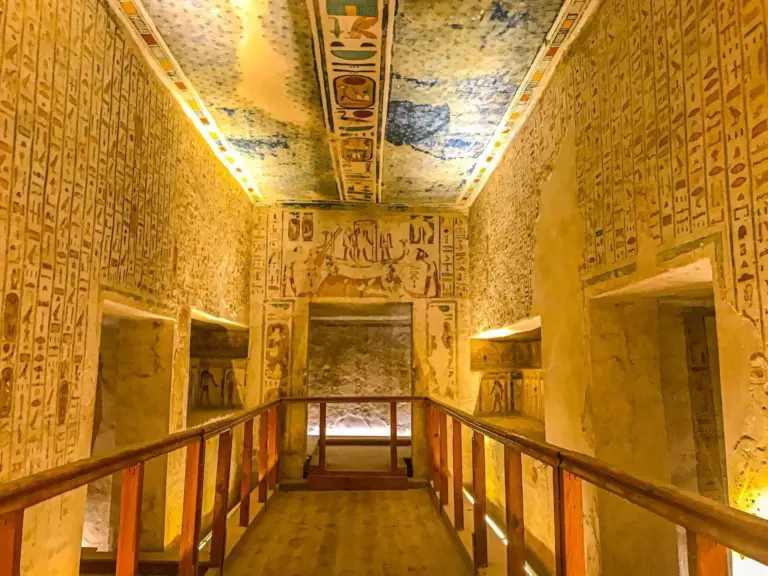Shintoism, an enduring belief system that has shaped the Japanese way of life for centuries.
As Japan’s indigenous religion, Shinto, or “the Way of the Kami,” is a path that has shaped much of the national identity.
Unlike many world religions, Shinto is not bound by a singular holy text or a strict set of doctrines; instead, it is characterized by its reverence for nature, emphasis on purity, and the veneration of kami – the myriad spirits believed to inhabit the natural world.
I even learned that there’s up to seven kami in a single grain of rice! Which is probably why Japanese people often finish their food without leftovers.
Shintoism is a celebration of life, focusing on the here and now rather than the afterlife. As we explore the world of Shintoism, we uncover not just a religion, but a way of living, a lens through which the Japanese people view their relationship with the world around them.
What is Shintoism?
Originating in the Jomon period, Shintoism has no single founder, central authority nor sacred scripture, making it unique among major religious traditions. Instead, it grew organically from the animistic beliefs of the Japanese people, venerating the natural world and the kami, within it.
The concept of kami lies at the heart of Shinto. These spiritual entities, omnipresent in nature, are not gods in a Western sense but are revered as sacred spirits of places, natural phenomena, ancestors, and historical figures.
The interaction with these kami forms the core of Shinto practices, which are carried out in numerous shrines across Japan. These shrines, or jinja, marked by the iconic torii gate, serve as gateways to the sacred, blending the physical and spiritual worlds.
Throughout its history, Shinto has coexisted and syncretized with Buddhism, in a belief system known as Shugendo. Notably, during the Meiji Restoration, Shinto was used to promote Japanese nationalism, a period that significantly impacted its role in society.
Nowadays, it has returned to its roots as a more personal and community-focused tradition following the post-World War II separation of religion and state.
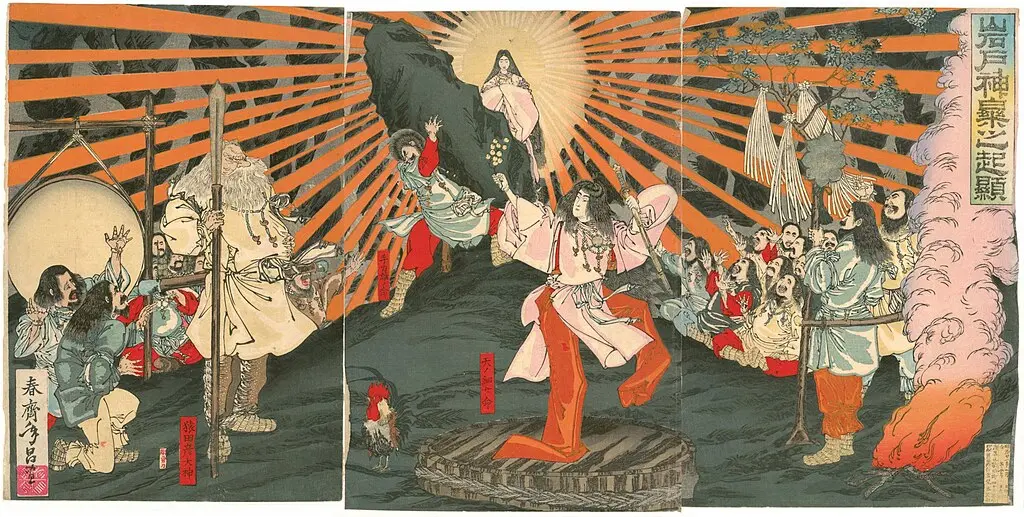
What are the Sacred Texts of Shintoism?
While Shintoism does not have sacred texts in the same way that the Bible is to Christianity or the Quran is to Islam, it does have historical records and compilations of myths that hold significant value. The most notable of these are the “Kojiki” (Record of Ancient Matters) and the “Nihon Shoki” (Chronicles of Japan).
Kojiki: Completed in 712 CE, the Kojiki is Japan’s oldest extant chronicle. Written in a mixture of Chinese characters and phonetic transcription of spoken Japanese, it compiles myths, legends, and oral traditions, along with genealogies of the imperial family. The Kojiki is a primary source for Shinto mythology and is revered for its detailed accounts of the kami and the creation of Japan.
- Nihon Shoki: Completed in 720 CE, the Nihon Shoki is the second oldest book of classical Japanese history. It is more formal and comprehensive than the Kojiki and was written in classical Chinese. The Nihon Shoki details the history of Japan from a mythological and legendary perspective, starting from the creation of the world and covering the first 34 emperors.
Unlike central religious texts that dictate doctrine and moral codes, the Nihon Shoki and Kojiki are more like cultural and historical records. They provide insights into the early beliefs, practices, and societal structures of Japan, rather than serving as guiding scriptures for spiritual life.
What are the Core Beliefs of Shintoism?
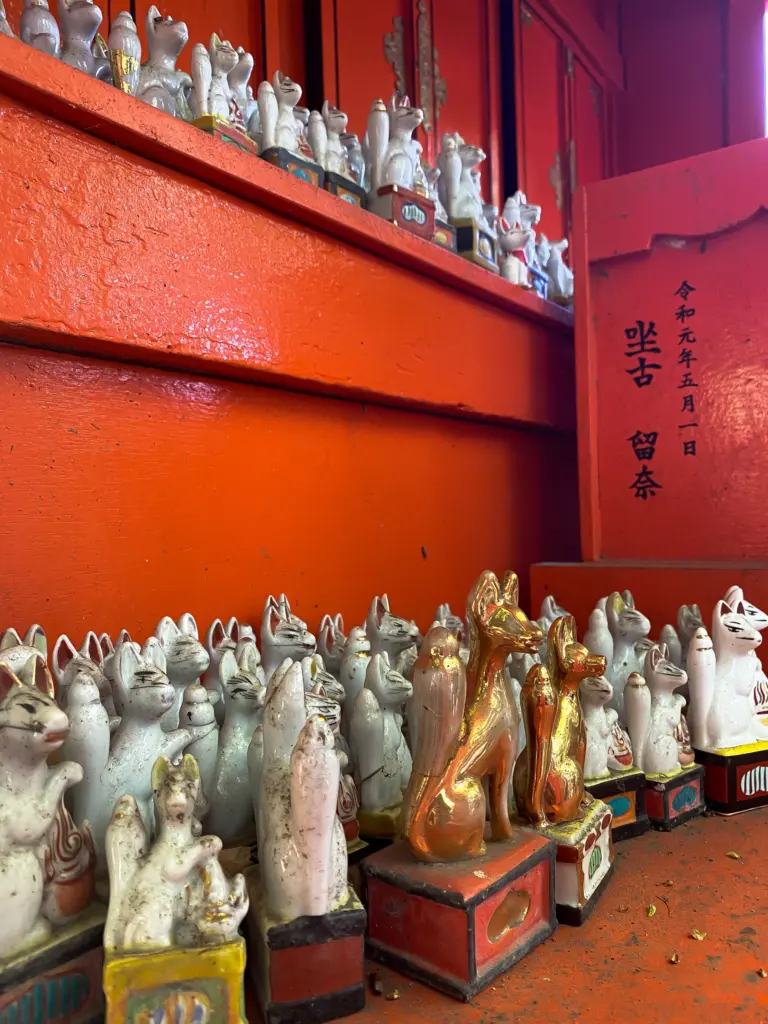
Kami
Kami are omnipresent, with each having their own unique character. This diversity reflects the natural world’s richness, from grand natural formations to local landscapes. Some Kami have a national presence in the collective consciousness of Japan, while others hold significance in local communities.
The relationship between humans and Kami is characterized by reciprocity and respect. People engage in festivals, rituals, and offerings to honor the Kami, seeking their blessings, guidance, and protection in return. This interaction is an acknowledgment of the harmony between humans and the spiritual realm.
Kami manifest in various forms, often symbolized in nature or represented by animals, like the fox as the messenger of Inari, the Kami of fertility and prosperity.
Kegare
Kegare is a fundamental concept in Shintoism that addresses the idea of impurity, but it’s important to understand it within the unique context of Shinto beliefs. Kegare is not necessarily moral wrongdoing or “sin” in the way many Western religions perceive it; instead, it’s a natural state of impurity that can affect people, objects, and spaces, disrupting the harmony in the world.
In Shinto, kegare is often associated with certain life processes that are considered to disrupt the natural order. This includes natural occurrences like death, childbirth, illness, and menstruation. Again, it’s important to note that these events are not seen as bad.
They are simply part of the natural cycle of life that can cause a temporary state of spiritual imbalance.
To address kegare, Shinto practices include various purification rites such as Misogi and Harae which we will cover further down below. Essentially, these rituals are aimed at restoring purity.
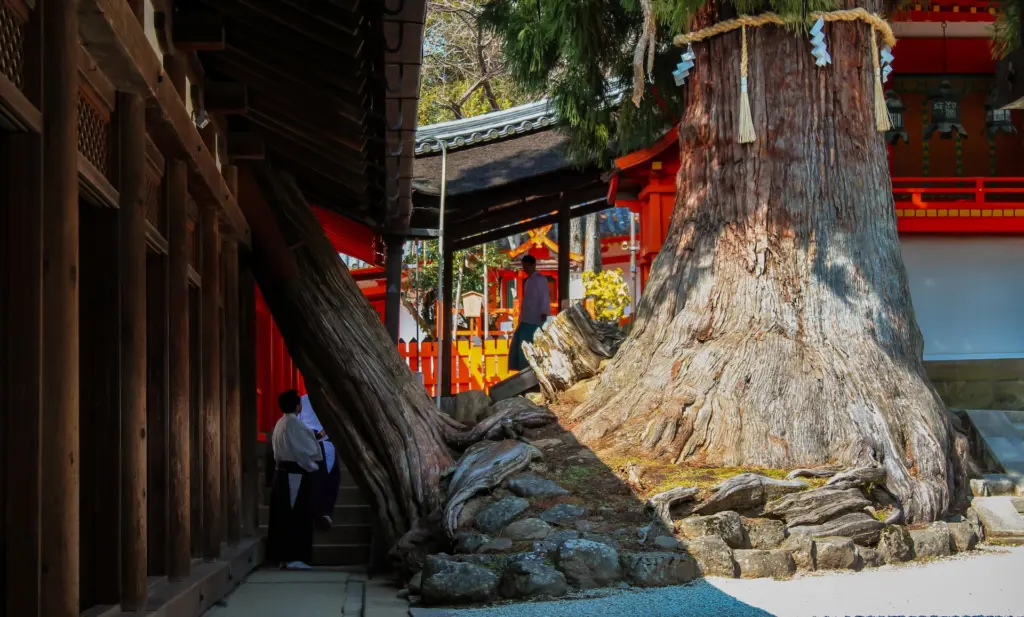
Kiyome
The sense of purity, or Kiyome, is integral in maintaining a harmonious relationship with the natural world, the kami, and the broader community.
In Shinto, natural elements like rivers, mountains, and forests are revered as sacred and inherently pure. This reverence extends to the kami, who are believed to reside in these natural spaces.
Maintaining purity is thus crucial for a harmonious relationship with the kami.
Beyond the physical aspect, Shinto also places a strong emphasis on mental and ethical purity. This involves nurturing sincerity, a clear conscience, and positive intentions in one’s actions and thoughts.
Living in harmony with others and nature, and avoiding negative emotions, is considered essential in upholding purity.
Afterlife
Unlike religions with detailed doctrines on the afterlife, Shintoism focuses more on life and living in harmony with nature and the kami. The concept of an afterlife in Shinto is not clearly defined, and there isn’t a strong focus on what happens to an individual after death.
However, Shinto does acknowledge the continuation of the spirit after death. Spirits, or reikon, are believed to exist beyond physical demise. Ancestral spirits are particularly significant, with the belief that ancestors watch over their descendants. Festivals like Obon honor these ancestral spirits
Shintoism maintains a unique stance on death. Death is considered a form of kegare. Consequently, traditional Shinto practices do not involve funeral rites (and even when they do, they are largely derived from Buddhist practices), which are instead typically conducted under Buddhist customs in Japan, again this is the syncretic relationship between Shinto and Japanese Buddhism in action.
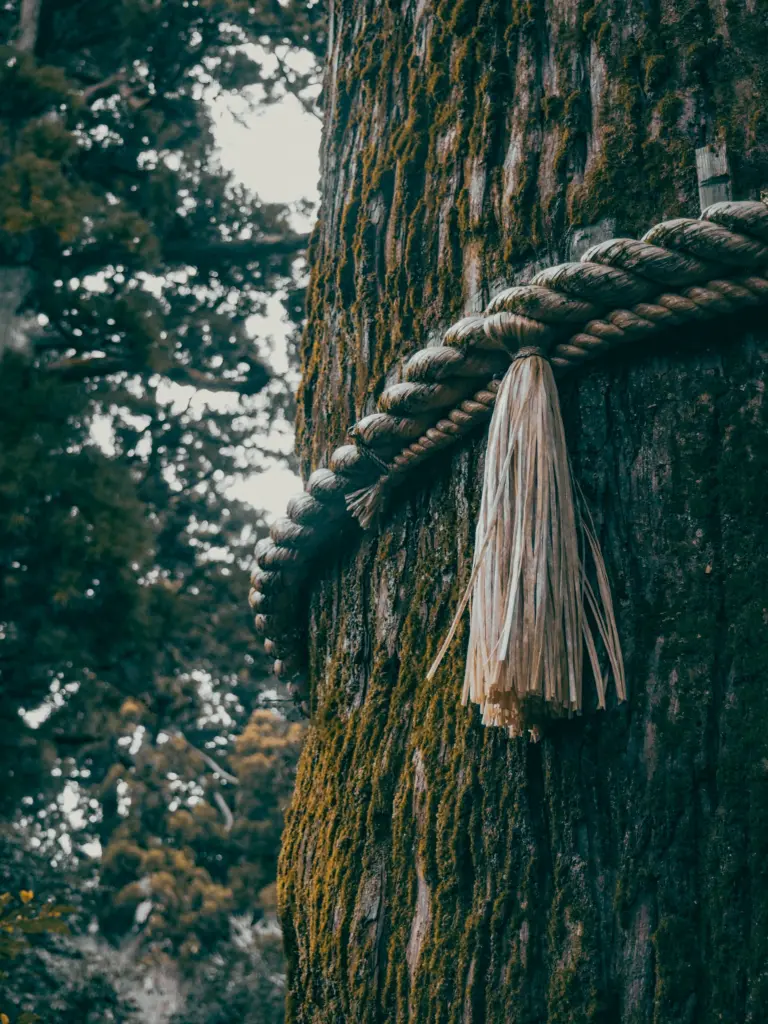
Musubi
Musubi represents the power of creation, and it plays a role in the understanding of how life and the universe are interconnected.
Musubi can be translated to mean “tying together“, but its significance goes far beyond these simple definitions. It’s the coming together of elements to create something new and the natural forces that drive growth and development.
This concept is seen as a fundamental force in the universe, one that governs not just the physical world but also the spiritual realms.
In the context of Shinto, Musubi is often associated with the kami. It’s believed that the kami themselves are manifestations of Musubi, embodying the creative and harmonizing energy of the universe.
This energy is what brings things into existence, sustains them, and allows them to flourish. Everything in the universe, from the largest celestial body to the smallest human action, is connected through this divine interplay of creation and growth.
What are the Core Principles of Shintoism?
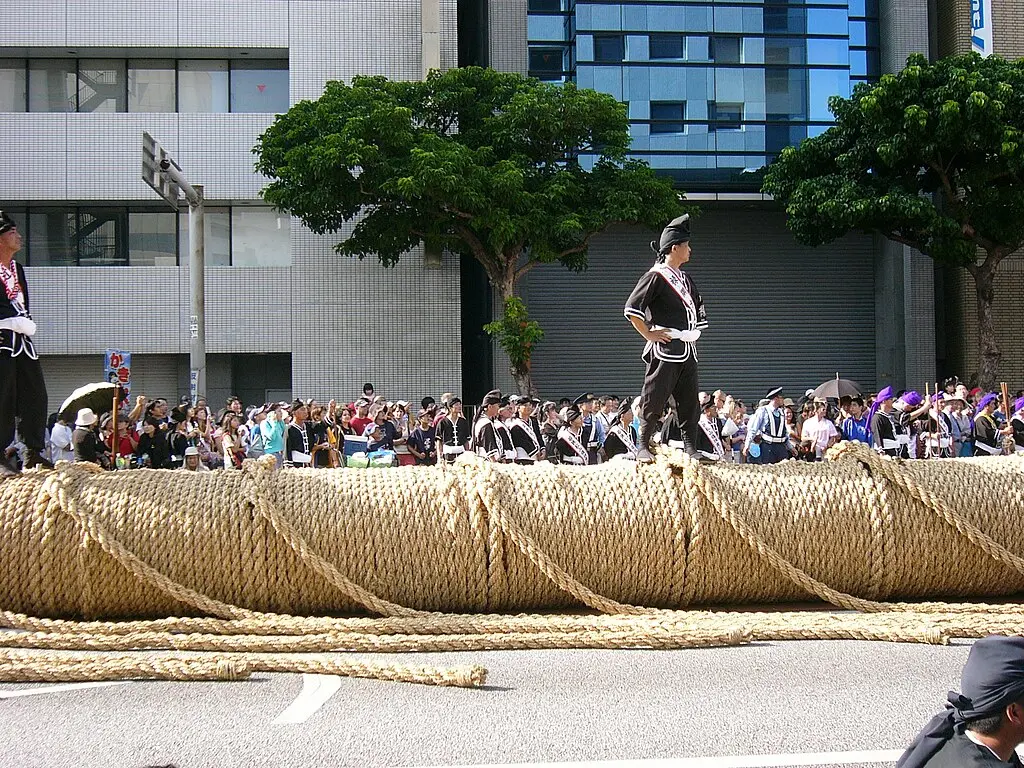
Four Affirmations
The Four Affirmations in Shintoism are a set of principles that encapsulate the core ethos of the Shinto faith. These affirmations are not formal doctrines, but they effectively convey the underlying values of Shinto.
Tradition and the Family: The emphasis here is on the importance of ancestral heritage and the continuity of cultural and family customs. This includes honoring ancestors and recognizing the role of family kami in daily life.
Love of Nature: This principle embodies the belief that the natural world is sacred and that kami are present in all natural elements. It’s not just about appreciating nature but also about living in harmony with it and taking on a stewardship role towards the environment.
Physical Cleanliness: Cleanliness in Shinto goes beyond physical cleanliness; it’s closely linked to spiritual purity. Regular purification rituals are essential in Shinto practice, reflecting the belief that maintaining a clean body and environment is integral to spiritual well-being.
Festival: Festivals (Matsuri) are occasions to honor the kami and to reinforce community bonds. Matsuri are celebrated to mark the changing seasons, significant life events, and historical moments. The picture above shows the Tug of War Festival, celebrated in Naha.
Kannagara
Kannagara is the idea of living in harmony with the kami and essentially flowing with the natural order of the universe. It’s about aligning one’s life with the rhythms and principles that the kami represent.
The principle of Kannagara suggests that every action, thought, and aspect of daily life should be in accordance with the way of the kami. This includes showing respect for nature, participating in communal activities, and maintaining purity in both a physical and spiritual sense.

Five Elements
The concept of the Five Elements in Shintoism, though not as central as in some other Eastern philosophies like in Feng Shui and Hinduism, still plays a significant role in understanding the natural world and its relation to spiritual beliefs. These elements are seen as fundamental aspects of the universe:
-
Chi (Earth): Represents solidity, stability, and nourishment. It is the foundation upon which all things rest and grow. In Shinto, the earth is revered as a source of life, providing the environment for nature and humanity to thrive.
-
Sui (Water): Symbolizes fluidity, purification, and the flow of life. Water is crucial in Shinto purification rituals, used to cleanse both the physical body and the spiritual essence. It is also revered for its life-sustaining properties and its constant, flowing nature.
-
Ka (Fire): Embodies energy, transformation, and vitality. Fire is often used in Shinto rituals as a purifying force, burning away impurities and conveying prayers to the kami. It represents the dynamic and consuming aspects of nature.
-
Fu (Wind): Signifies movement, change, and the unseen. Wind in Shinto is often considered a messenger of the kami, carrying blessings and vital life forces. It symbolizes the invisible yet powerful forces at work in the world.
-
Ku (Void): Represents the spiritual realm, the infinite, and the source of all potential. This element transcends the physical, embodying the essence of existence and the connection to the kami. It is the space where spiritual insight and enlightenment reside.
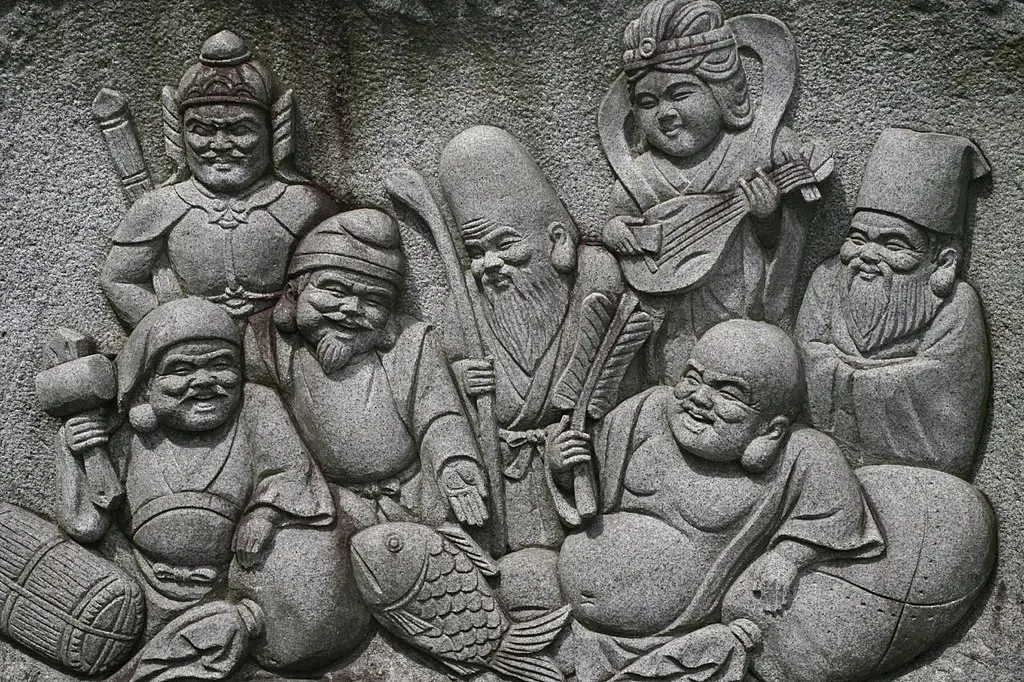
Shinto Mythology Overview
At the heart of Shinto mythology are the tales of deities like Amaterasu, the sun goddess and ancestor of the imperial family, and the creation gods Izanagi and Izanami, responsible for forming the Japanese islands.
These myths do more than just explain natural phenomena; they provide insights into the values, ethics, and worldview of Shinto. For instance, Amaterasu’s story, involving her retreat into a cave and the consequential darkness over the world, symbolizes the importance of the sun and light. Similarly, the tales of Izanagi and Izanami offer perspectives on life, death, and purification rituals in Shinto.
There’s also the Seven Lucky Gods who are amongst the most popular deities in Japan!
To delve further into the deities and stories of Shinto mythology, you can click here.
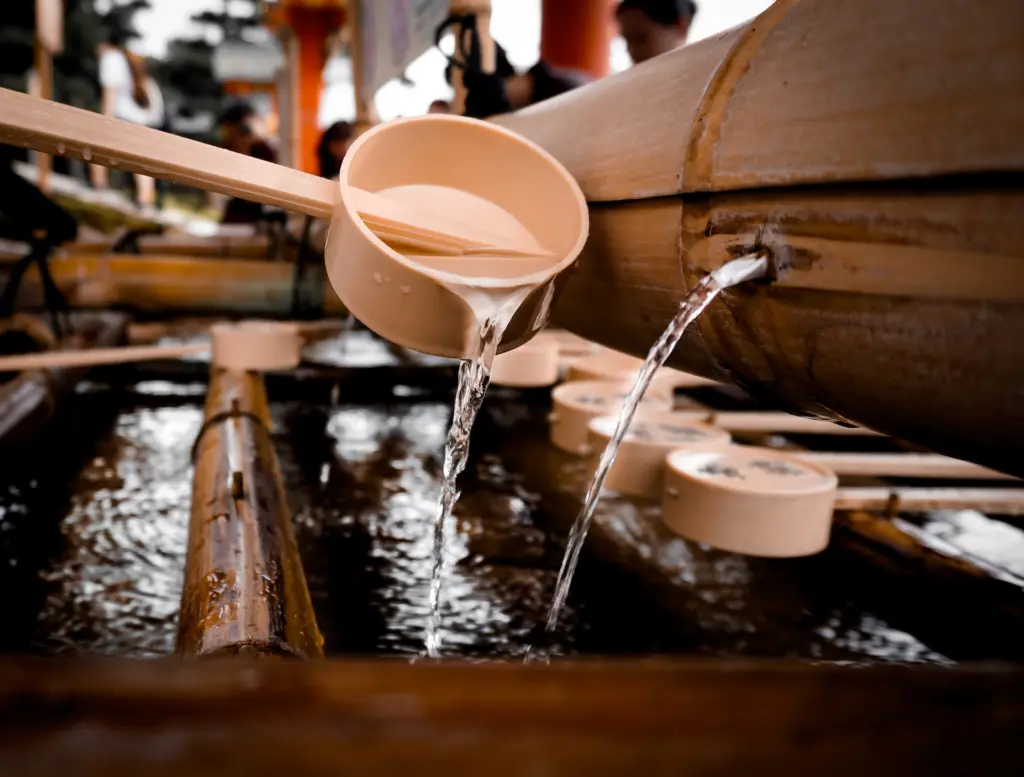
What are the Practices of Shintoism?
Shintoism has plenty of practices that are culturally ingrained to the Japanese daily life. These practices are diverse, ranging from personal rituals to community-wide festivals. Key practices include:
Misogi: This is a purification rite that involves cleansing the body, particularly in a natural body of water like a river, waterfall, or the sea. Misogi is believed to cleanse both physical and spiritual impurities.
Harae: Another form of purification, harae is a broader ritual that can involve various methods, such as waving a white paper wand (harai-gushi) or a branch of the sacred sakaki tree over someone.
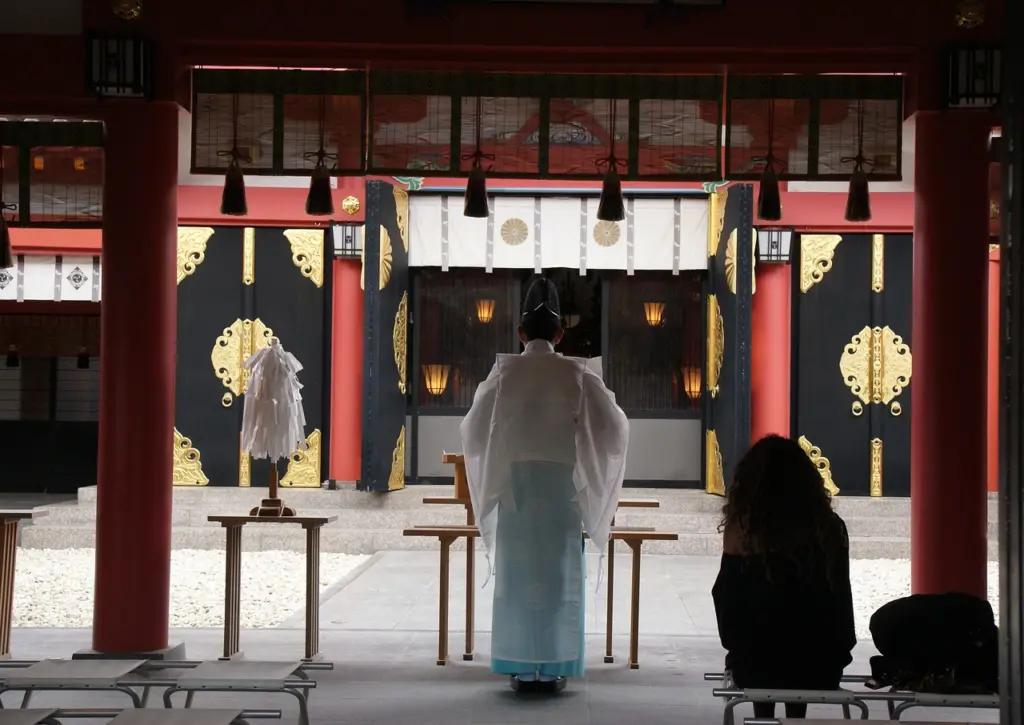
Visiting Shrines: These visits involve paying respects to the kami, making offerings (like money, food, or sake), and praying for blessings, guidance, or purification.
Omamori and Ofuda: These are amulets and talismans acquired from shrines. Omamori are protective charms that people carry with them, while ofuda are talismans placed in homes or offices for blessings.
Kagura: Traditional ritual dances and music known as kagura are performed at some shrines and during certain festivals. Kagura is considered to be a way of entertaining the kami and is often accompanied by ancient music.

Shinto Symbols
Shintoism uses various symbols to represent its core concepts. For instance:
Torii Gate: Perhaps the most recognizable symbol of Shinto, the torii gate marks the entrance to a sacred space, separating the physical world from the spiritual realm. It’s typically found at the entrance to Shinto shrines. If you’re curious, the photo above was taken in Hakone!
Shimenawa and Shide: Shimenawa are sacred ropes, often made of straw, which are used to demarcate holy spaces. Shide, the zigzag-shaped paper streamers often attached to shimenawa, signify purity and the presence of kami. I often found these on trees and boulders while hiking.
Sakaki Tree: Considered sacred in Shinto, the sakaki tree is used in various rituals. Branches of the sakaki tree are often used in ceremonies and as offerings to kami. I asked a Shinto priest why it was considered sacred and he told me that because the sakaki is evergreen, even during winter therefore it symbolizes eternal life.
Mirror: Mirrors are common in Shinto shrines and are symbolic of truth, wisdom, and the kami. The mirror reflects the heart and soul, encouraging introspection and the pursuit of purity. I often found mirrors inside the shrines themselves (when the doors were open) which is such a cool symbolic interpretation.

What are the Customs of Shintoism?
While you’re in Japan, you might come across some of the Shinto customs listed here, especially the first four:
Ema: Writing wishes on small wooden plaques and hanging them at shrines. People visit shrines to leave these ema in the hope that their prayers will be answered by the kami.
Omikuji: Drawing fortune-telling strips at shrines. These paper strips, which can be found at many Shinto shrines, offer predictions about the person’s future in various aspects of life, such as health, love, and success.
Hatsumode: The first shrine visit of the New Year. This is a widespread custom where people visit a shrine in the first few days of the New Year to pray for good fortune and health in the year ahead. Our first Hastumode was in Zojoji Temple and the crowds were unlike anything we’ve ever seen in Japan!
Shinzen Kekkon: Shinto-style wedding ceremonies. These traditional weddings are conducted in accordance with Shinto rites, involving specific dress codes, offerings, and rituals that honor the kami and celebrate the union.

Shichi-Go-San: A festival for children aged three, five, and seven. These numbers are considered auspicious and this celebration involves visiting a shrine to pray for the healthy growth and well-being of young children.
Chinowa-kuguri: We were able to participate in a Chinowa-kuguri in Kamakura. This involves passing through a large ring made of cogon grass, known as a Chinowa. This ring is often set up at the entrance of Shinto shrines. The ritual of passing through the Chinowa, typically in a specific pattern (often a figure-eight), symbolizes purification and the removal of bad luck.
Oharae no Gyoji: Often referred to as the “Great Purification Ceremony,” is one of the most important rituals in Shintoism. Conducted twice a year, traditionally at the end of June and December, it serves as a communal purification rite to cleanse the sins and impurities (tsumi and kegare) accumulated by the people over the past six months. In my company, we usually have this during December and it’s such an amazing experience.
Plan Your Trip to Japan | Best Travel Resources
Book Your Accommodations
- Booking.com – the world’s leading online booking platform for accomodations around the world, they have an extensive amount of available listings with zero booking fees and best price guarantees.
- Hostelworld – a backpacker’s best friend, Hostelworld has the largest collection of hostels and guesthouses for affordable prices.
Don’t Forget Insurance
- SafetyWing – from Nomad Insurance, an insurance by nomads for nomads. They understand our lifestyle well and have really comprehensive and flexible plans that cater to any traveler.
Find Cheap Flights
- Kiwi.com – my go-to for booking and finding the cheapest flights and it’s helped me save tons of money. They do virtual interlining which is connecting flights from airlines that do not codeshare, so you can find routes that you wouldn’t be able to find normally.
Join Tours & Activities
- GetYourGuide – is one of the best places to find unique tours and activities. I found that it’s an excellent way to meet fellow travelers and create fond memories. They are not only limited to tours as they also offer niche services such as skip-the-line tickets or private transfers.
Catch a Ride
- Rentalcars.com – nothing beats the freedom of the road, Rentalcars.com is the world’s largest online car rental service. They operate across 160 countries so they’re the perfect partner to work with if you find yourself wanting a ride.

